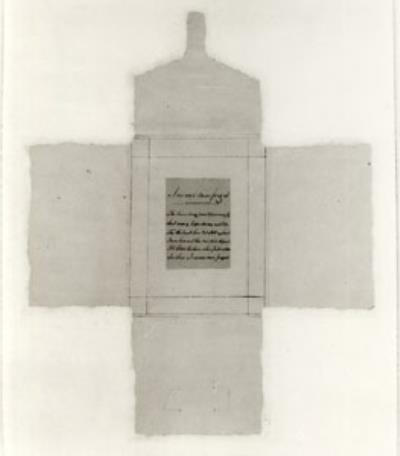- Home |
- Search Results |
- Claire Harman on the secrets, discoveries and necessary edits when writing about the Brontës
Claire Harman on the secrets, discoveries and necessary edits when writing about the Brontës
While writing Charlotte Brontë: A Life, Claire Harman discovered so much about the other sisters. Here she talks about the details she edited out, and the questions left unanswered

I'd have liked to have written a lot more about Emily, whose progress as a poet was for years a secret
If I'd been able to just go on and on, I'd have liked to have written a lot more about Emily, whose progress as a poet was for years a secret even from her beloved sisters. Perhaps that's what powered her profound self-confidence and intimidating silences, the knowledge of what was going on in her own head. Just being the sister of this veiled genius would be enough reason to warrant a biography, and Charlotte was Charlotte Brontë on top of that! And I'd have liked to have included much more about Anne (I came to believe she had a speech impediment, which might have explained part of her extreme reticence socially), more about Branwell and his career disasters, more about Patrick Brontë's poems and stories, which are so revealing of his almost comically peculiar personality, and more from the story of Ellen Nussey's management of her friend's legacy. I certainly became very familiar with every aspect of these people's lives. The Parsonage at Haworth, one of the most atmospheric literary shrines in the world, houses an unrivalled collection of their papers and possessions, and being allowed to work in the library there was an intensely rewarding experience - reading the Brontës' manuscripts and handling their books and treasures right behind the door to the kitchen where so many of the children's days were spent and where Tabby the servant would be stirring the potatoes into 'a sort of vegetable glue', as Charlotte once joked. It was wonderfully engrossing; like being an eavesdropper on the past.

What did Charlotte do with her letters from Constantin Heger, the married teacher in Brussels with whom she fell so diasastrously in love? [...] I'm pretty sure there's a decomposed stash of them buried somewhere on Haworth Moor
Quite apart from the things you don't have space to include in a long book like this, there is also a legacy of unanswered questions. What did Charlotte do with her letters from Constantin Heger, the married teacher in Brussels with whom she fell so disastrously in love in 1842-3? He was nervous about their fate after Charlotte's death, but by then, they had disappeared. I'm pretty sure that there's a decomposed stash of them buried somewhere on Haworth Moor, but we'll never know where. Was Emily writing a second novel between completing Wuthering Heights in 1847 and her death at the end of 1848, as a letter from her publisher implies? And if so, what happened to it, and to her correspondence, or Anne's? Was it Charlotte who destroyed these papers, or Charlotte's widower Arthur Nicholls - or even Emily and Anne themselves?
Lastly, there's a category of things out on the margins of one's research that remain resolutely obscure. You sit and puzzle over them when they crop up in an archive, and try to assess them as sensibly as you can. Everything deserves the biographer's consideration; this item, for instance, catalogued as 'Pattern for a coin purse', and attributed to Charlotte Brontë's manufacture, a folding paper template with a central pink slip approximately 5 x 3.5 cm in size, with the following poem written in tiny and incredibly neat and flowing hand:

I never can forget
Tho' time may pass & Years may fly
And every hope decay and die
Tho' distant thou Yet still my heart
From love and thee can ne'er depart
I'll bless the hour when first we met
For thee I never can forget
There's a fine line between 'missing something' and over-speculating, and this small piece of paper seems to lie right on the boundary. There's no proof that Charlotte composed the verse, but it does seem very personal. Who was it addressed to? When I first saw it in the Parsonage archives, my mind rushed to answer 'Constantin Heger', the man who broke her heart, but again, that's not provable and the exercise could have been wholly conventional - a present for a female friend, even. But if it's a 'pattern for a coin purse', why inscribe a verse on it so carefully, and why keep it? Back in its envelope in the archive, the beautifully-inscribed little poem is hanging on to its secrets.